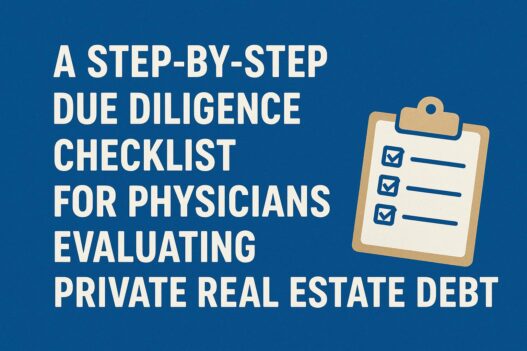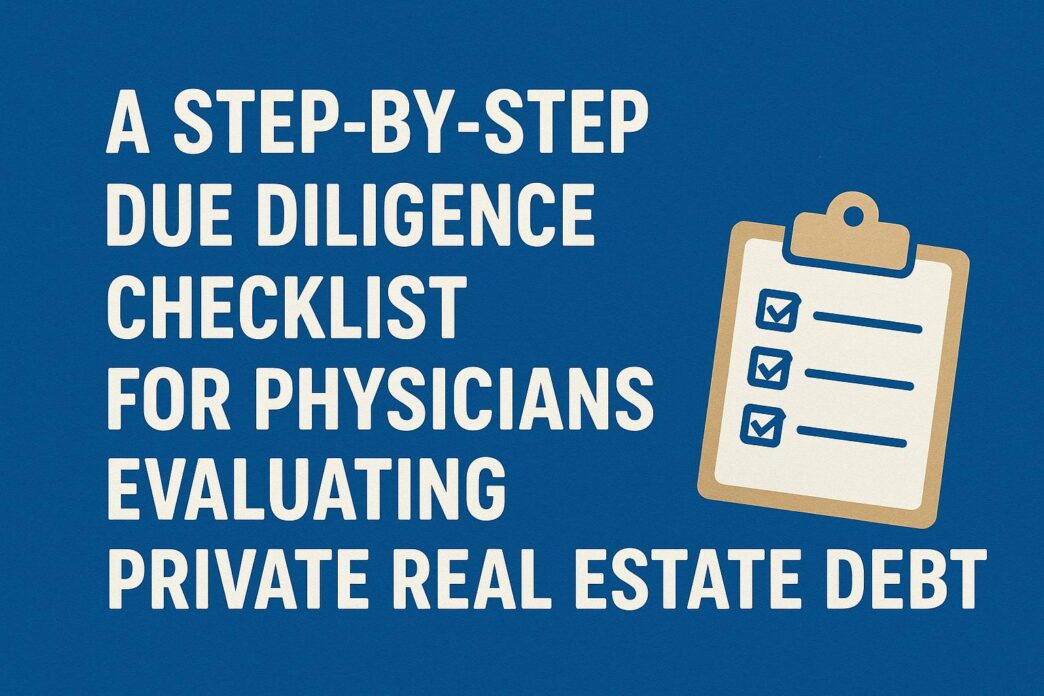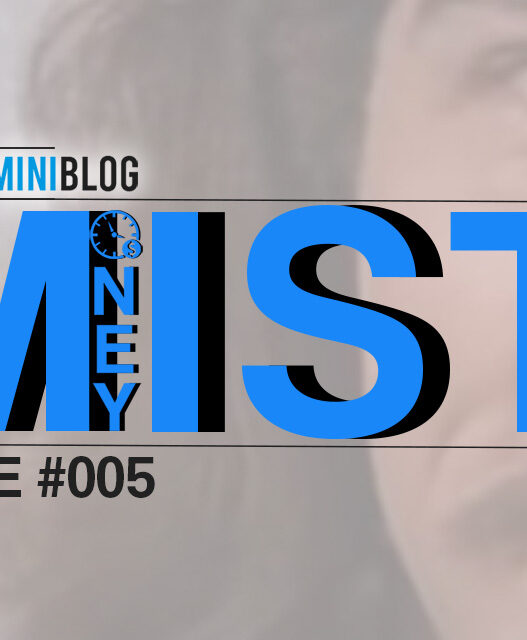When you browse real estate investments, polished marketing can make almost everything look attractive. Glossy photos, confident language, and optimistic financial projections can create an impression of certainty where none exists.
The real difference between a smooth experience and an avoidable headache is the rigor applied before any funds move.
For physicians who want exposure to real estate income without becoming landlords, private loans that are secured by real property can be a strong fit. That fit depends on disciplined underwriting and active servicing from start to finish.
Use this educational framework to ask better questions, compare offerings consistently, and understand the screening steps a professional lender and loan servicer may perform before presenting a loan for potential investor participation.
It reflects a property-first approach to underwriting, a review of borrower experience, an analysis of loan structure and documents, and ongoing servicing practices that platforms such as Ignite Funding apply before funding and throughout the life of a loan.
Step One: Define Success Before Reviewing Any Offering
Create a one-page personal policy so every decision is guided by the same rules.
Clarify the role you want private real estate debt to play, such as income stability or diversification. Set your preferred range of stated loan terms that fit your situation.
Identify maximum exposure by property type, borrower, and region. Decide which account you will use, such as a taxable account or a Self-Directed Individual Retirement Account and list the paperwork that choice will require. A written policy allows you to evaluate opportunities in minutes rather than hours.
How Ignite aligns: Each prospective opportunity is packaged with clearly stated terms, collateral information, and borrower background.
If you choose to use a Self-Directed IRA, the team is accustomed to coordinating the transaction steps with custodians which can simplify logistics.
Step Two: Begin With the Collateral, NOT the Concept
Start with the property as it exists today. Ask what the property type is. Confirm whether it is stabilized and income producing, value add, development, or land.
Ask how the current value was determined. That may include comparable sales, an income approach, or a cost and replacement analysis.
Clarify the business plan and the path to value creation. Common paths include entitlements, renovation, lease up, or sale. Identify where the project is on that path today and what milestones come next.
How Ignite aligns: Ignite Funding underwrites with a property-first mindset. Before a loan moves forward for investor participation, the team evaluates the present condition and value, the feasibility of the plan, and whether the proposed structure fits the actual work ahead.
The intent is to tie underwriting to real project facts rather than only financial projections.
Step Three: Vet the Borrower's Track Record and Capacity
Experience is specific to context. Ask whether the borrower has completed projects of similar size and complexity in this asset type and in this submarket. Ask about the team that supports the plan, including contractors, property managers, architects, and general contractors.
Look for evidence of budget discipline and the presence of contingency planning in prior deals. Capacity matters. The borrower should be able to absorb normal friction such as cost variance, permitting delays, or slower sales velocity.
Ignite Funding screens for borrower history and fit to project scope. The emphasis is on pairing investor's capital with borrowers who have relevant experience for the property and the business plan. Projects are not judged by spreadsheets alone.
They are evaluated by who is executing, where they are executing, and what competencies they have demonstrated.
Step Four: Clarify Key Terms Before You Commit
Before you commit, focus on the information that is available and ask precise questions, so you understand how the deal is intended to function once documents are finalized. You should receive a clear summary of the loan terms and the stated rate of return.
What to review before funding
- The summary of terms that describes collateral, stated interest rate, stated payment schedule, and stated term.
- The borrower profile, track record, and the plan for the property, including near term milestones.
- The proposed use of proceeds and any planned construction or renovation budget.
- The proposed approach to extensions including what conditions would allow an extension and how investors will be notified.
- The servicing approach, including update cadence, draw oversight if applicable, and who coordinates communications.
- The remedies that may be available under similar transactions. Recognize that outcomes are case specific and governed by the documents and applicable law.
Questions to ask the Investment Sponsor
- How were value and feasibility determined for this property today, and what evidence supports that view.
- What loan to value is being targeted and why that level is appropriate for this asset and plan.
- How interest payments are expected to be handled and how updates are delivered during the term.
- How variances are identified and communicated, and what steps are typically considered if performance drifts.
- What information investors will receive after funding and when they will receive it.
Before any investor participation, Ignite Funding provides a clear summary of the proposed terms, the collateral, the borrower's background, and the servicing approach.
After funding, executed documents govern the relationship, and investors receive communication that tracks progress against the plan and describes any material changes as they arise.
Step Five: Model Your Cash Flow and Avoid Reliance on Any Single Payoff Date
Some investors choose to hold positions with different stated terms in order to reduce timing concentration. That approach can spread expected timelines across a calendar. However, payoff timing is not assured.
Stated maturities are informational only and do not guarantee repayment or liquidity on a particular date. Maintain separate liquidity for known obligations and evaluate each loan on structure and risk rather than on an assumed cash need date.
A consistent pipeline of underwritten loans allows investors to select opportunities that fit their own policies and to avoid concentration in any single project or timeline. Regular communications support informed reinvestment decisions without rushing.
Step Six: Plan for Challenges with a Clear Process
Good underwriting reduces surprises but does not eliminate them. Ask how variances are detected, how they are communicated, and what tools are available to address them. In a default scenario, secured lenders may consider workouts, additional collateral, default interest where permitted, or foreclosure.
There is no single defined path to recovery.
Each situation is unique, and any recovery depends on the asset, the borrower, the market, the governing documents, and the jurisdiction.
The objective is to quantify options and execute the one that is expected to maximize recovery under current conditions. Outcomes are not guaranteed.
Ignite Funding manages servicing in house from funding through payoff. If a project experiences issues, the same team that understands the original underwriting coordinates communications and pursues the appropriate next steps under the governing documents and applicable law.
Investors receive updates so they understand status and planned actions.
Step Seven: Decide How to Fund Investment
Many physicians prefer to hold private real estate debt in a Self-Directed IRA In that case, interest accrues within the account, and administration is handled by the custodian.
Coordinate beneficiary designations, distribution timing, and contribution limits with your custodian and your tax professional. If you hold positions in a taxable account, consider how interest receipts align with household cash flow and estimated tax payment schedules.
Other common account types investors use
- Taxable individual or joint accounts. Individual, joint tenants with right of survivorship, or tenants in common.
- Trust accounts. Revocable living trusts and certain irrevocable trusts, subject to trustee powers and document requirements.
- Entity accounts. Limited liability companies, corporations, and partnerships, with appropriate governing documents and resolutions.
- Retirement accounts held by a custodian. Self-directed traditional, Roth, SEP, and SIMPLE IRA accounts through a qualified custodian.
Ignite Funding accepts investments through the following account registrations, subject to standard documentation and approval requirements:
- Individual accounts
- Joint accounts
- Trust accounts
- Entity accounts, including limited liability companies and corporations
- Self-Directed IRA accounts held at third party custodians, including traditional, Roth, SEP, and SIMPLE IRA accounts
Ignite Funding is not a retirement account custodian.
If you plan to invest through a Self-Directed IRA or another qualified plan, you will complete the transaction through your chosen custodian or plan trustee, and the Ignite team will coordinate the required paperwork.
Ignite Funding maintains a partnership with Preferred Trust Company as its preferred custodian for Self-Directed accounts, and investors may also choose to work with other qualified custodians vetted by Ignite Funding.
Step Eight: Create a Simple but Repeatable Review Cadence
During the term, read each update and compare progress to the milestones outlined at the start. Note any variances and how they are being addressed. Near the stated maturity, decide whether to redeploy or hold cash based on your written policy rather than on emotion.
Keep a short journal of your decisions. That habit will improve your next decision even more than the current one.
Structured communications and accessible summaries help investors maintain a professional cadence without information overload. The goal is to provide clarity and consistency from funding through completion.
Putting the Pieces Together
Imagine a physician who wants to build a two-hundred-fifty-thousand-dollar private debt sleeve to complement traditional holdings. They split the sleeve across five loans, each with conservative loan-to-value and diversified by property type and metro.
They choose a mix of stabilized income assets, value add plans with documented draw controls, and a small development with clearly defined entitlements.
Stated maturities are spread across the year. Interest payments land monthly and are earmarked for household outflows and estimated taxes. As loans repay, the physician redeploys only into offerings that match the original policy.
The result is a steady cadence of income, a sensible spread of risk drivers, and a process that can be managed in minutes per month.
Why This Approach Fits a Physician Work Life
Clinical practice rewards structured thinking. Differential diagnosis, ordered testing, and protocol driven interventions are second nature.
This playbook applies the same discipline to evaluating private real estate debt.
By defining success up front, underwriting the collateral and the sponsor, reading the structure, keeping a separate liquidity plan, and preparing a downside process, you transform an alternative investment category into a methodical and time-efficient practice.
Checklist to Turn Marketing into Measurable Decisions
Real estate investments can look convincing in a brochure, but results come from process. Use this checklist to move from impressions to evidence:
- Start with a written policy so every decision serves a clear purpose.
- Evaluate the collateral as it exists today, then the borrower's track record and capacity in this specific market and asset type.
- Clarify key terms before you commit and keep a separate plan for liquidity since payoff timing is not assured.
- Monitor updates against milestones during the term, document what changes and why, and let your policy guide reinvestment rather than emotion.
For physicians with limited time, a repeatable method is the edge. The combination of property first underwriting, careful borrower review, clear terms, and engaged servicing helps convert passive income goals into professional grade execution.
If you prefer an investment sponsor that centralizes those functions, Ignite Funding aligns with this approach and coordinates with custodians when you choose to invest through a Self-Directed IRA.
Apply the same disciplined thinking you bring to clinical practice, and let consistent due diligence turn attractive marketing into informed, defensible decisions.
Disclosure: Money invested through a mortgage broker is not guaranteed to earn any interest and is not insured. Prior to investing, investors must be provided applicable disclosure documents.



















